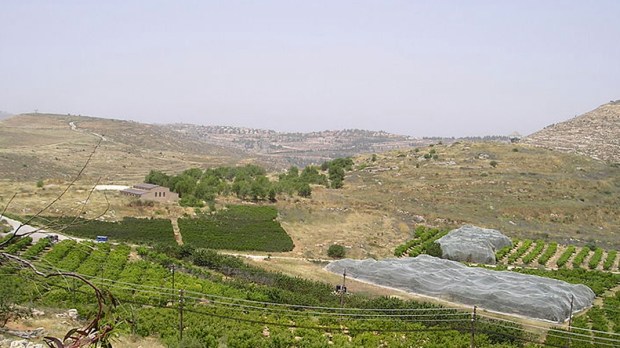For the last 20 years, Dr. Scott Stripling, provost at The Bible Seminary in Katy (Houston), Texas, has used the Bible as an invaluable resource to guide him through his archaeological endeavors. Now, as he finishes a 50-day excavation of the Tel Shiloh site, in Israel, his conclusions have sparked debate among his peers.
“I can tell with 100 percent certainty that there were Israelites in Shiloh because of the many indicators we have,” Dr. Stripling told Breaking Israel News. “The pottery shows that they were there when the Bible says they were there. I cannot yet say that I have 100 percent archaeological evidence the Jewish Tabernacle stood at Shiloh. We do find many reasons to seek confirmation of the Biblical text. There are indications, like the large amount of animal bones that are consistent with the Biblical sacrificial system, and the large east-west walls we are excavating.”
Stripling’s team also unearthed a ceramic pomegranate, but unfortunately there was no sign of the Tabernacle. He suggests that since the Tabernacle was constructed from animal skins, it is quite possible there is nothing left of it to discover, after so many thousands of years.
Stripling’s findings were met with criticism from prominent Israeli archaeologist, Israel Finklestein, the man who led an extensive dig of the site in the 1980s. Finklestein does not believe the Bible is accurate enough to be relied upon as a resource and believes that the lack of evidence found at the site suggests the Tabernacle never stood there.
In an interview with the Times of Israel, he said:
Biblical traditions should be read on the background of their time of composition, the ideology of the authors, etc. One cannot approach them in a simplistic manner. The story of the Ark is fascinating; but it can teach us mainly about the world of the authors who lived centuries after the destruction of Iron [Age] I [which ended around 1,000 BCE] Shiloh.
The use of the Bible as a guide has Stripling at odds with many of his peers. However, he maintains that to disregard the Bible’s potential would be foolishness. He explained, “I have found numerous synchronisms between the archaeological data and the Biblical text.”
As for the critics, he says in his book The Trowel and the Truth, it all comes down to minimalism vs maximalism:
“There is an accusation some make that if you happen to believe what you are reading in the Bible it disqualifies you as a scientist,” Stripling said. “In Israel, most of the archaeologists are secular and atheists. They do not accept the Bible as a historical text. That puts me outside of the mainstream of archaeology but that’s precisely where I want to be.” “Minimalists, like Finkelstein, say that you can’t trust the Bible,” Stripling said. “Maximalists, like me, maintain that the Bible is a historical document.”
Want to see what Tel Shiloh looks like? Here’s a drone video with some great shots:

